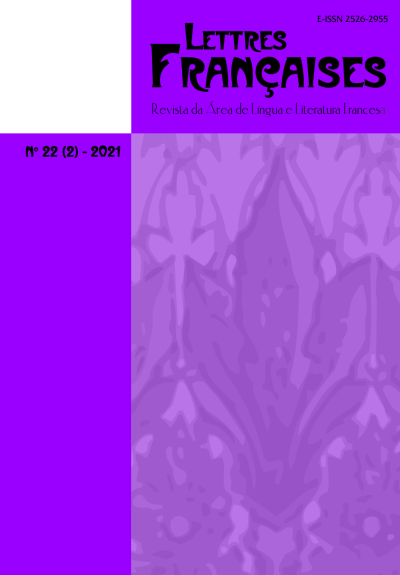A brousse e seus habitantes
considerações a respeito dos animais na obra de René Maran
Palavras-chave:
René Maran, “Boum, le chien et Dog, le bouffle”, Djumá, cão sem sorte, Zooliteratura, Cachorro, Vidas SecasResumo
Este estudo é fruto da série de trabalhos apresentados como parte das comemorações aos cem anos do romance Batoualá, de René Maran, com o objetivo de divulgar a obra desse autor em nosso país. Assim, o presente artigo tem como objetivo principal analisar a representação dos animais, em especial do cachorro, na obra romanesca do autor, mais especificamente em seu romance, Djumá, cão sem sorte (1927/1934) e na novela “Boum, le chien et Dog, le bouffle” (1941), para constituir nosso corpus. A perspectiva teórica utilizada destaca a representação dos animais e foca nas aproximações entre seres humanos e não humanos, tendo como base as obras de Maciel (2016), Milanesio (2020), Asaah (2008) e Constantini (2007). Ao nos concentrarmos na representação do cachorro e sua relação com os outros seres nessas narrativas, ficou aparente sua semelhança com as caracterizações de outros cães presentes na literatura latino-americana, de modo especial com a cachorra Baleia, personagem do romance Vidas secas (1938), de Graciliano Ramos. Assim, partindo dessas aproximações e das representações estabelecidas em nossas análises, pudemos observar, além dos mecanismos da própria construção dessas personagens, a simbiose entre o cachorro e ser humano, e como esse vínculo faz parte da própria constituição dessas personagens caninas.
Downloads
Publicado
Edição
Seção
Licença
Os manuscritos aceitos e publicados são de propriedade da Revista Lettres Françaises. É vedada a submissão integral ou parcial do manuscrito a qualquer outro periódico. A responsabilidade do conteúdo dos artigos é exclusiva dos autores. É vedada a tradução para outro idioma sem a autorização escrita do Editor ouvida a Comissão Editorial.

